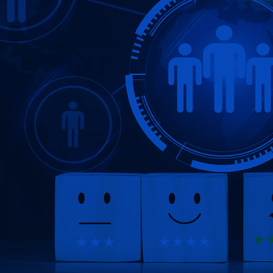ITEA - The fast track to software innovation

Definition of software innovation in ITEA
In the ‘ITEA dictionary’, software innovation can have the following four meanings:
-
The invention of a new way to compute something:
new algorithms or new processing concepts are software innovation. For example, the introduction of new artificial intelligence methods is software innovation. -
A new way to integrate existing software technologies:
there is a huge reservoir of software methods and just the idea to integrate some of them with a new objective is software innovation. For example, the combination of data models and physical models is a way to innovate even if you only use existing technologies. -
The introduction of software to enable an activity not yet
using software:
this meaning is close to the concept of digital transformation, which represents the introduction of digital technologies in various processes or activities. For example, the introduction of existing image processing techniques in digital pathology is software innovation. -
Creation of new software tools and solutions for the design
of complex objects/services:
the increasing complexity of the products we want to design (e.g., an aeroplane) or the infrastructures we must put in place (e.g., a smart electricity grid) requires new software solutions that will enable the design. As a complex system by itself, software design is also a domain requiring software innovation with new methods to efficiently develop high-quality software (software engineering, software creation simplification/automation, software for massively distributed systems).
The importance of software innovation
Economic impacts
Software innovation has been at the heart of the creation of internet giants like Google, Amazon, Meta and Microsoft, with new search engine and content management software and the adoption of new business models.
Software innovation is also the engine of the software market, with a value of around 700 billion euros per year1, where the software providers for enterprises and consumers compete by translating new ideas into software.
But perhaps it is the role that software has taken in all industrial sectors that is most striking. In a car today, you have more than 100 million lines of software code and it will continue to expand. This is the same in almost every industrial sector, including the content industry, telecommunications, finance, buildings, health, energy and distribution. In all these industries, as soon as you want to innovate, this will go hand in hand with the development of new software and you cannot compete without excelling in software innovation. Digitalisation and software are fostering gains in productivity and reduction in environmental impact across industries.
Societal impacts
Software innovation is also central to helping solve our societal challenges: climate change, urbanisation, ageing population, pressure on healthcare, unemployment and scarcity of human resources, education, etc.

If you analyse the 17 United Nations’ sustainable development goals (SDGs), software innovation plays a direct role in achieving nine of these goals: Zero hunger, Good health & well-being, Quality education, Affordable & clean energy, Decent work & economic growth, Industry, innovation & infrastructure, Sustainable cities & communities, Responsible consumption & production and Climate action. Software innovation also plays an indirect role in at least five additional goals: No poverty, Clean water & sanitation, Life below water, Life on land and Peace, justice & strong institutions.
If software becomes more central in our lives, it will have a positive environmental impact as we will trade non-material goods with low impact instead of material goods with higher impact. Moreover software is key to optimising resource usage in many domains.
Software will also have a positive impact on the job market. Even if some jobs disappear, more jobs requiring a higher qualification will be created.












